Zipp Vuka Stealth
We have 3 kinds of aerobar systems now in the marketplace, seems to me. Least expensive are clip-ons that mount to pursuit bars of one sort or another, and Profile Design, Vision and Zipp do a nice job of providing highly functional clip-ons at a very reasonable price. This is the system that comes on almost all tri bikes below $4,000.
At the high end are built-in aerobars that are part of the whole bike, integrated stems and bars and honestly I’m skeptical of these. I’m most skeptical when they appear on road race bikes, which is all the rage these days. Hey Spesh, C’dale and the rest of you! Enjoy this moment! Because it’s just a moment; not the future.
These integrated road bar/stem constructs will fall out of favor. What we’ll get, to replace them, are proprietary stem-handlebar systems where the bar has any shape but round, and mates with the stem via some form of keyway. The fact that there is no such system, and none is (to my knowledge) contemplated, does not discourage me. This is where we’ll end up. I see no other way. The current system of just, “Here’s the handlebar and it’s got this stem length,” is unsustainable. Whoa. I hijacked my own article. Let me get back on point.
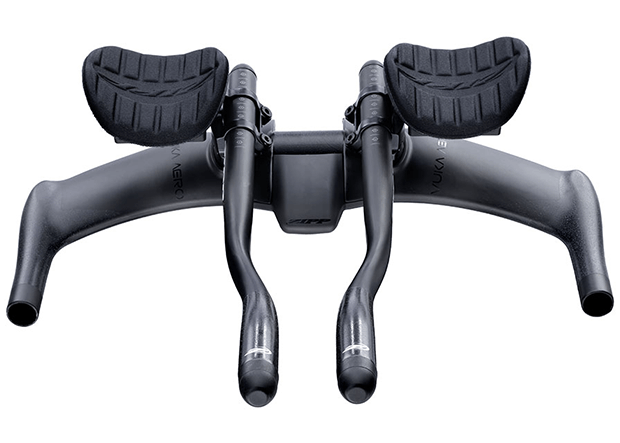
This bike-as-motorcycle, “we make everything from tip to tail,” paradigm is alive in tri bikes, with integrated bars that may have as little as 30mm of fore/aft, or 30mm of vertical, adjustment. Or, they adjust but they’re rickety. Note to bike makers: If you make your own aerobars to differentiate your product, you’re bound to succeed. Just, you may differentiate your bike right out of contention. The occasional brand has done a very good job with its aerobars, notably Cervelo on the P3X. The bar on the new P5 is likewise very good, but not as adjustable. In fact, that bar fails the adjustability requirement, and that’s okay, because the P3X’s bars fit on the new P5. If the P5’s bar is not sufficiently adjustable, you have an option.
In between the two paradigms above are “wonderbars” that superize your mortal bike. We’ve written about some of them: Profile Design’s Aeria Ultimate, the Culprit Covert Op, the Tririg Alpha One. Another is the Zipp Vuka Aero, reviewed here, and this bar is just fine without its signature features. But it does have two features that I’ll point out in particular, and because of this bar’s $900 price it’s actually not too bad pricewise, as these bars go (none of the wonderbars are supercheap, save the Covert Op).
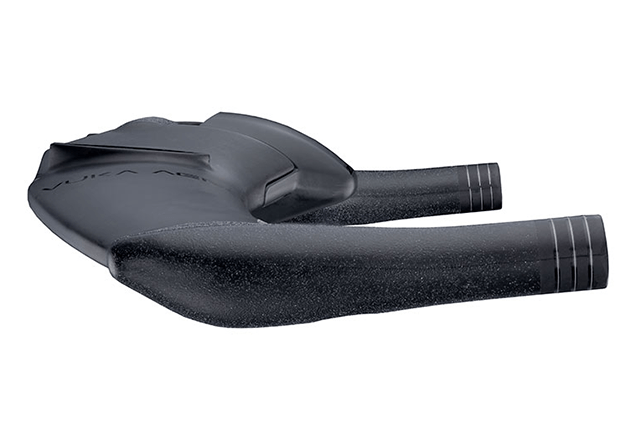
May I segue briefly? I wrote a week ago about the Canyon Speedmax CF 8.0, and here’s one point I tried to make: Some of you are going to get your bikes via pathways somewhat like it was when I first started bike racing. Back in the 1970s a lot of us got our bikes directly from the bike manufacturer or, in the case back then, the “framebuilder”. Most of us needed to know how to work on bikes. If you buy your bike from the manufacturer, welcome to my old world. Here’s the difference between then (40 years ago) and now: Cables don’t route outside the frame anymore; they route inside the frame. In one pic here you’ll note a hydraulic line running from the brake lever on this bar down through the steer column. How much of this are you up for?
Here’s the reality: You won’t decable your bike, shorten the housing to length, make the necessary changes. You’ve decided your bike is too risky to adjust. You’ll just ride a bike that’s maladjusted to you, and/or with wires and cables all over the place. Here’s one solution, if you’re going to do your own work on your bike. You’re best off – if you can swing it – moving to electronic shifting. This might sound counterintuitive. But it’s the front end you’ll need to adjust, and electronic shifting makes this easy. Now, back to my regularly scheduled article.
The thing about SRAM electronic, it’s the easiest groupset to own if you assemble your own bikes, because the batteries are external, and the system is wireless. No shift wires running through the frame. There are wires running from the shifters to the “Blip Box”. That little doohickey sends the wireless signal to the derailleurs. There are complaints about the Blip Box. Where do you put it? Too big.
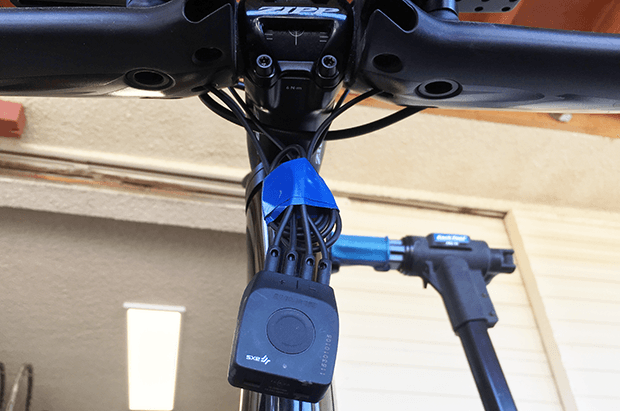
The new SRAM AXS Blip Box is about half the volume of the old, and if you look at the pics here you can compare them to pics of Shimano’s Junction Box in the Speedmax review of last week. Either system requires you to use a box of some sort. The nice thing about electronic is that you can adjust the front end of your bike without decabling the entire bike down to the shifters (as you would have to do with mechanical).
With this bar, Zipp has given you a dedicated place for the new Blip Box. After you shorten the extensions, place pedestals under the extensions/pads, get everything where you need it, the resulting wire you just bind up and stick it, and the Blip Box, in a sort of nose cone in front of the aerobar.
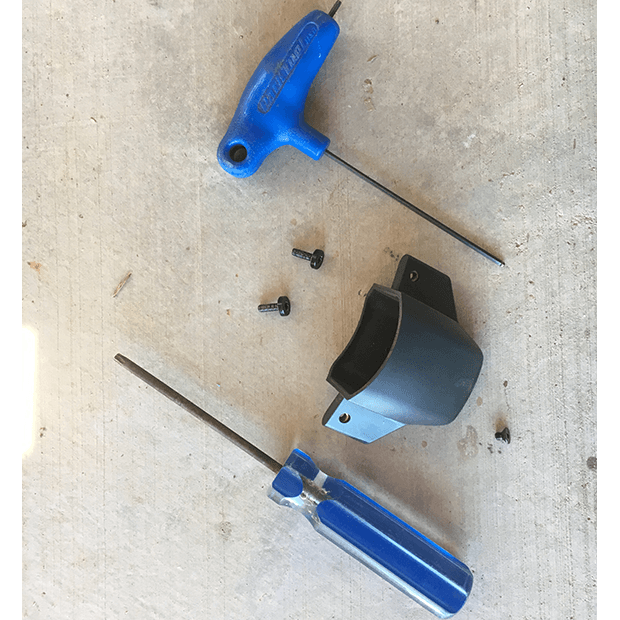
I’ve shown you what that nose cone looks like disassembled (above), and there are 3 screws: the Blip Box comes with a nut cert, you screw this down with an Allen of some size (2mm? 2.5mm? I forget), and then there’s a pair of T25 Torx screws (SRAM/Zipp/Quarq loves these) that affix the nose cone to the bar.
This is one of the singular features of this bar: the Blip Box repository. If you don’t have the Zipp Vuka Aero on your bike, fine, just the Blip Box problem and the Shimano Junction Box problem are the same problem. Put it wherever you find handy. Probably in the top tube storage.
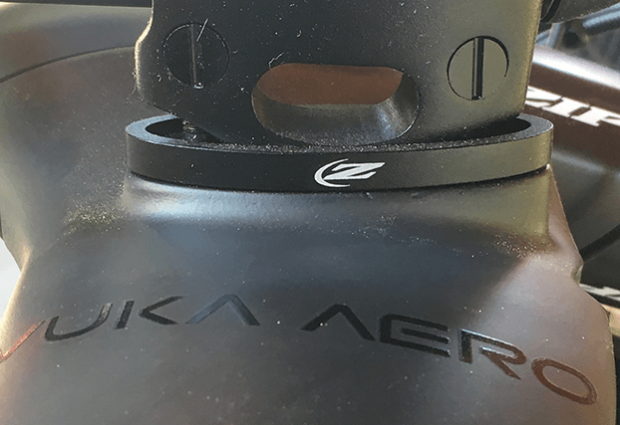
The other feature I love about this bar is the pad tilt. I’m not talking about bar tilt, that is, aerobar extensions/bads that tilt independent of the pursuit bar. Yes, this bar has that (see how it manages bar tilt in the image above). I’m talking about pads that tilt, using wedges (see this in the image below). You show me 5 pro triathletes, I’ll show you 5 different ways these guys grip the extensions. Different places on the extensions. Different hand positions. One hand over the other. Underneath, overtop. Every hand placement scheme creates its own forearm angle. A unique angle may well centralize the pressure on the front or (most typical) back of the pad. No sense lengthening the pad (the newest thing coming) if your arm isn’t sitting square on it. So, Zipp made these wedges, so that you can tilt the pad only. I love this idea.
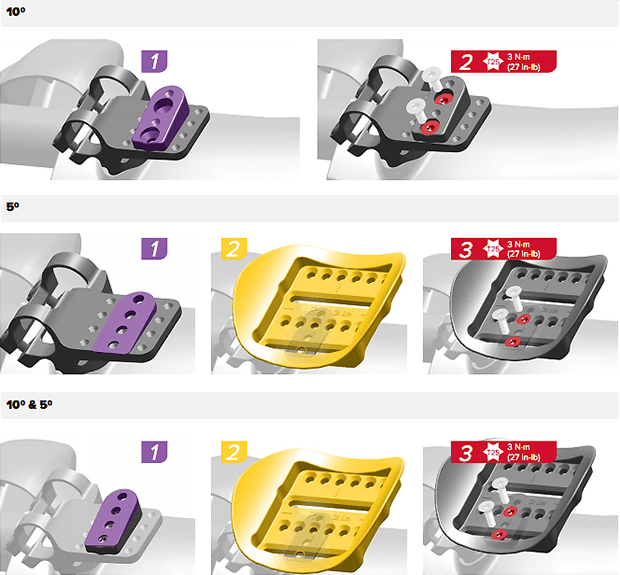
Otherwise, Zipp’s new Vuka Stealth checks all the boxes for armrest width, swivel and pad pedestal adjustability. The pads are quite comfortable, and the one thing I didn’t like about Zipp has been fixed in recent years: the pad fore/aft length has been truncated. What?! After all my whinging about the lack of pad length! My stated view of pad length – for about a decade – is that it needs to increase forward of pad center. The old Zipp pads were palindromically longer (front and back). The new pads are plenty long enough, but their ovalness was truncated, and know I don’t hit my knees on the backs of these pads. The whole system works well, extensions are easily adjusted.
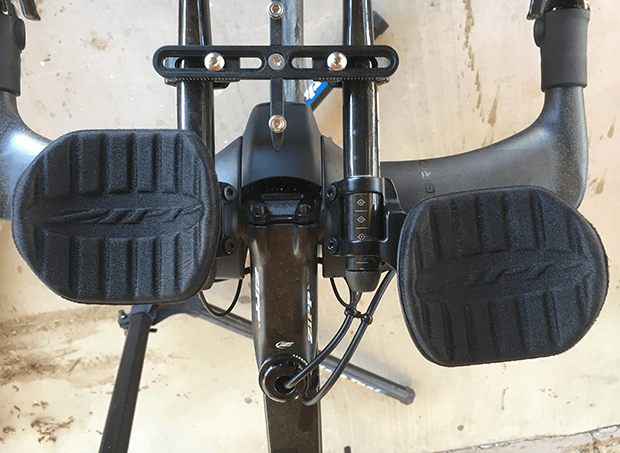
This bar will not work for you if you’re hunting a very low position, that is, if your position is not low enough and you’re casting about for a bar that will get you still lower. This is not this bar’s mission, and not that many people need a lower position with today’s tri bike geometries, and because you can use the stem of your choice with this bar.
The one complaint I have about this bar is small. And it’s not really about the bar. It’s about Zipp’s BTA mount (below). I fuss about this because I really want to like this mount. I do like this mount. But what I want from this mount is a configuration something like you see here, but if you look closely, it’s an unusable config. The head unit mount works for either Wahoo or Garmin and I like my head unit right there, where that Wahoo ROAM sits. But the cage is so close to the head unit I can put a bottle in there. This BTA allows me to flip the cage – rear mount the bottle – or flip the BTA mount. But I don’t like my head unit behind the bottle, and I don’t like my bottle facing backward. What I want is the bottle sitting further back. Right over the stem, not in front of it. Lord knows I’ve already got a lot of weight cantilevered in front of the steering axis.
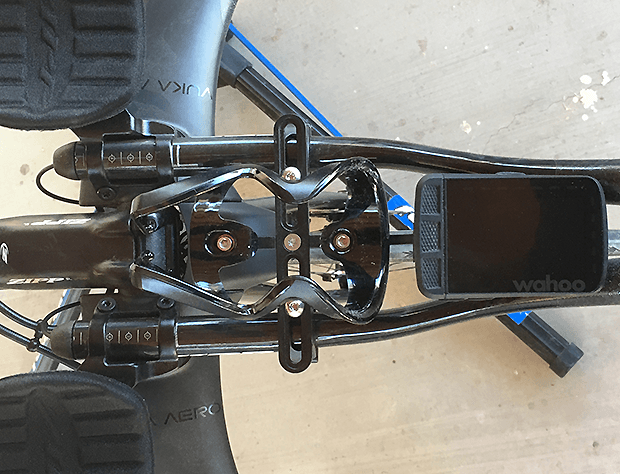
It would be monumentally easy (easy for me to say) to stamp out a piece of sheet metal two thru holes and 2 new threaded holes allowing me to position my bottle arrears. I just will do this myself, in my workshop, and then I can use this BTA mount.
The two things I’d like out of Zipp are those classy wedges for its cheaper aerobar pads; and my little bottle repositioner thinger bobber for the BTA mount. Otherwise, I like the new Zipp Vuka Aero mucho, especially when used in concert with SRAM AXS electronic. (Point of order: is it redundant to say AXS electronic? Isn’t all AXS electronic? Yes. Currently. But I suspect 10t, 12sp, direct mount cranks, all that stuff will make their way to mechanical; whether it’s at that point still part of the AXS ecosystem I don’t know.)
Read more about this aerobar if you’ve a mind, by downloading its technical docs, or by migrating to the website.



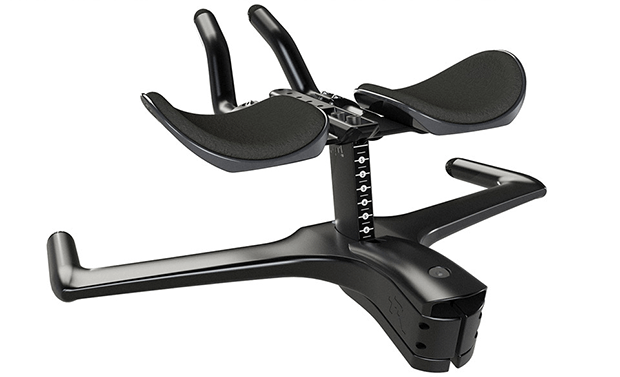
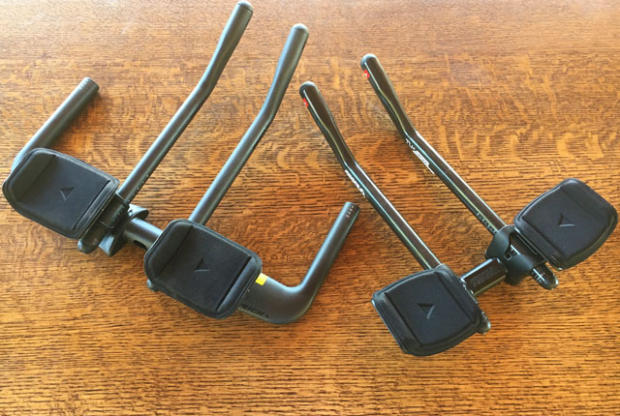
Start the discussion at slowtwitch.northend.network